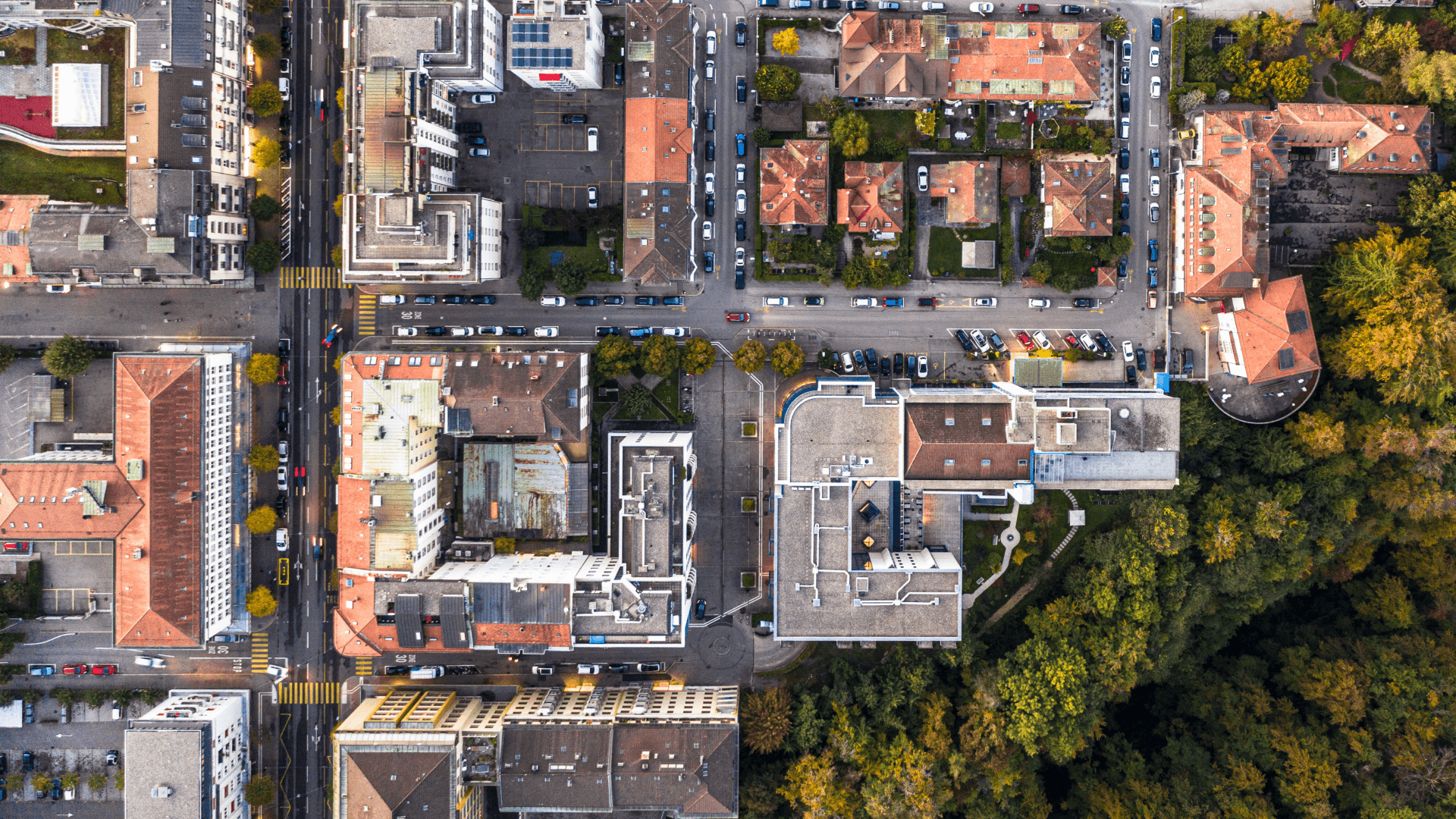For our list of the best cities to invest in real estate in the U.S., we looked at the largest 600 cities in the U.S. and found the ones where home ownership costs are low and rents are high. For our list of the best suburbs to invest in real estate, we looked at communities outside big cities. But what about small cities? For this list of the best small cities to invest in real estate, we looked at cities in the U.S. with populations between 10,000 and 99,000.
Using data from Zillow and the U.S. Census, we looked at data for about 3,800 cities in the U.S. with populations between 10,000 and 99,000, and crunched the numbers to find the best small cities for investing in real estate. We found that for investors looking for smaller-city investments, Arkansas is a good place to start: five of our top 10 cities are in the “Natural State.”
The 10 best small cities to invest in real estate in 2022
1. Bluffton, Indiana
Typical home value: $140,646
Five-year home value appreciation: 49.8%
Effective property tax rate: 0.5%
Rental vacancy rate: 1.0%
Rent-to-home-value ratio: 5.0%
Rent-to-income ratio: 15.0%
Bluffton is the best small city to invest in real estate, based on our analysis. Its typical home value is 59% below the national average. Home value appreciation is 19% below the national average, but effective property taxes are, too — 51% below the average. Rental vacancy is 83% below average.
2. Webb City, Missouri
Typical home value: $161,137
Five-year home value appreciation: 79.0%
Effective property tax rate: 0.8%
Rental vacancy rate: 1.9%
Rent-to-home value ratio: 5.5%
Rent-to-income ratio: 16.6%
Webb City’s typical home value is 53% below the national average, and the five-year home value appreciation is 28% above the national average. The effective property tax rate is 30% below average, and the rental vacancy rate is 67% below average.
3. Madison, Alabama
Typical home value: $361,106
Five-year home value appreciation: 66.4%
Effective property tax rate: 0.5%
Rental vacancy rate: 2.8%
Rent-to-home-value ratio: 3.3%
Rent-to-income ratio: 12.6%
Home values in Madison are 5% above the national average, and home value appreciation is 8% above the national average. The effective property tax rate is 53% below average, and the rental vacancy rate is 52% below the national average.
4. Rogers, Arkansas
Typical home value: $314,114
Five-year home value appreciation: 73.2%
Effective property tax rate: 0.7%
Rental vacancy rate: 2.5%
Rent-to-home-value ratio: 3.6%
Rent-to-income ratio: 17.2%
Half our list of the top 10 small cities for real estate investing are in Arkansas, and Rogers scored highest of the Arkansas cities on the list. Typical home values are 9% below the national average, but five-year appreciation is 19% above average. Effective property tax rate is 35% below average, and rental vacancy is 57% below average.
5. Batesville, Arkansas
Typical home value: $126,787
Five-year home value appreciation: 39.3%
Effective property tax rate: 0.6%
Rental vacancy rate: 2.5%
Rent-to-home value ratio: 6.0%
Rent-to-income ratio: 14.1%
Typical home value in Batesville is 63% below the national average, and five-year home value appreciation is also below the national average (36% below). Effective property tax is 42% below average, and the rental vacancy rate is 57% below average.
6. Bella Vista, Arkansas
Typical home value: $297,153
Five-year home value appreciation: 79.3%
Effective property tax rate: 0.8%
Rental vacancy rate: 1.6%
Rent-to-home value ratio: 3.9%
Rent-to-income ratio: 16.1%
Bella Vista has typical home prices 14% below average and a five-year appreciation rate 29% above the national average. Effective property taxes are 25% below average, and the rental vacancy rate is 72% below average.
7. Springdale, Arkansas
Typical home value: $273,648
Five-year home value appreciation: 73.6%
Effective property tax rate: 0.7%
Rental vacancy rate: 4.6%
Rent-to-home-value ratio: 3.4%
Rent-to-income ratio: 18.1%
Typical home value is Springdale is 20% below average, and five-year appreciation rate is 20% above the national average. Effective property tax rates are 39% below average, and rental vacancy is 21% below average.
8. San Luis, Arizona
Typical home value: $222,972
Five-year home value appreciation: 79.9%
Effective property tax rate: 0.9%
Rental vacancy rate: 1.0%
Rent-to-home value ratio: 3.5%
Rent-to-income ratio: 18.7%
San Luis has typical home values 35% below the national average, with a five-year appreciation rate of 30% above the national average. The effective property tax rate is 23% below average, and the rental vacancy rate is 83% below average.
9. Paragould, Arkansas
Typical home value: $152,479
Five-year home value appreciation: 45.8%
Effective property tax rate: 0.6%
Rental vacancy rate: 4.4%
Rent-to-home-value ratio: 5.8%
Rent-to-income ratio: 18.3%
Paragould has a typical home value that is 56% below the national average, and the five-year home value appreciation rate is 26% below the national average. The effective property tax is 46% below average, and the rental vacancy rate is 24% below average.
10. Pensacola, Florida
Typical home value: $238,980
Five-year home value appreciation: 79.3%
Effective property tax rate: 0.7%
Rental vacancy rate: 5.8%
Rent-to-home-value ratio: 5.0%
Rent-to-income ratio: 21.3%
Pensacola has a typical home value that is 31% below the national average, and the five-year appreciation rate is 29% above average. Effective tax rate is 37% below average, and the rental vacancy rate is the same as the national average at 5.8%.
Top 25 small cities for real estate investing
Rank | City | Home value | Home value appreciation | Tax rate (effective property tax rate) | Rental vacancy rate | Rent/home value ratio | Rent/income ratio | |
|---|---|---|---|---|---|---|---|---|
1 | Bluffton, IN | $140,646 | 49.8% | 0.5% | 1.0% | 5.0% | 15.0% | |
2 | Webb City, MO | $161,137 | 79.0% | 0.8% | 1.9% | 5.5% | 16.6% | |
3 | Madison, AL | $361,106 | 66.4% | 0.5% | 2.8% | 3.3% | 12.6% | |
4 | Rogers, AR | $314,114 | 73.2% | 0.7% | 2.5% | 3.6% | 17.2% | |
5 | Batesville, AR | $126,787 | 39.3% | 0.6% | 2.5% | 6.0% | 14.1% | |
6 | Bella Vista, AR | $297,153 | 79.3% | 0.8% | 1.6% | 3.9% | 16.1% | |
7 | Springdale, AR | $273,648 | 73.6% | 0.7% | 4.6% | 3.4% | 18.1% | |
8 | San Luis, AZ | $222,972 | 79.9% | 0.9% | 1.0% | 3.5% | 18.7% | |
9 | Paragould, AR | $152,479 | 45.8% | 0.6% | 4.4% | 5.8% | 18.3% | |
10 | Pensacola, FL | $238,980 | 79.3% | 0.7% | 5.8% | 5.0% | 21.3% | |
11 | Grand Junction, CO | $374,498 | 70.2% | 0.4% | 2.4% | 2.9% | 19.7% | |
12 | Kingman, AZ | $263,897 | 87.4% | 0.5% | 3.0% | 4.0% | 20.7% | |
13 | Hammond, | IN | $161,681 | 93.5% | 1.2% | 3.8% | 6.6% | 22.6% |
14 | Albertville, AL | $165,310 | 61.3% | 0.4% | 5.1% | 5.0% | 16.1% | |
15 | Oxford, AL | $166,500 | 46.1% | 0.4% | 4.5% | 5.8% | 15.3% | |
16 | Fort Smith, AR | $154,138 | 40.9% | 0.7% | 4.9% | 5.5% | 18.7% | |
17 | Hanford, CA | $346,913 | 59.2% | 0.8% | 0.6% | 3.5% | 18.7% | |
18 | Pasco, WA | $408,402 | 91.5% | 1.0% | 1.0% | 2.7% | 17.2% | |
19 | Jonesboro, AR | $200,822 | 42.6% | 0.6% | 4.0% | 4.7% | 20.0% | |
20 | Georgetown, KY | $266,377 | 51.4% | 0.8% | 2.1% | 4.2% | 16.8% | |
21 | Layton, UT | $547,538 | 102.1% | 0.6% | 3.2% | 2.4% | 16.0% | |
22 | Crawfordsville, IN | $177,692 | 50.2% | 0.6% | 1.6% | 4.4% | 17.8% | |
23 | Pecos, TX | $177,373 | 102.2% | 1.1% | 2.1% | 5.7% | 18.7% | |
24 | Peru, IN | $103,331 | 48.6% | 0.7% | 0.8% | 8.7% | 22.6% | |
25 | Decatur, AL | $183,632 | 57.3% | 0.4% | 9.2% | 4.5% | 16.8% |
Methodology
To find and rank the best small cities to invest in real estate, we looked at 3,800 cities and towns in the U.S. with populations between 10,000 and 99,000, and evaluated them over over six data points:
Home value: Typical home value from April 2022 (Zillow data)
Home value appreciation: Percentage increase in home value in the last five years, April 2017 to April 2022 (Zillow data)
Effective property tax rate: Median annual property taxes divided by median annual home value (Census data)
Rent-to-home-value ratio: Median annual rent divided by home value (Zillow and Census data)
Rental vacancy rate: Percentage of the city’s rental inventory that is vacant for rent (Census data)
Rent-to-income ratio: Median annual rent divided by median household income (Census data)
We weighed each factor equally and scored cities based on these factors. Our top small cities are characterized by low home values (you want to be able to afford property there); high home value appreciation (you want your house to go up in value, making your investment worth more both for future sale and future rental value); low effective property tax rate (lower taxes mean better margins); high rent-to-home-value ratio (you’ll recoup your money sooner because rents are high compared to what you’ll spend on the house); low rental vacancy (so you can definitely find tenants at the price you want); and low rent-to-income ratio (because tenants who can better afford rent are probably less likely to default or miss payments).
U.S. averages as of April 2022:
Typical home value (low is better): $344,141
Five-year home value appreciation (high is better): 61.5%
Effective property tax rate (low is better): 1.1%
Rental vacancy rate (low is better): 5.8%
We also looked at the rent-to-home-value ratio and rent-to-income ratio as indicators of how rental-friendly cities were. National data was not available for those numbers, but for the cities in our study, the averages were 6.2% and 25%, respectively.

